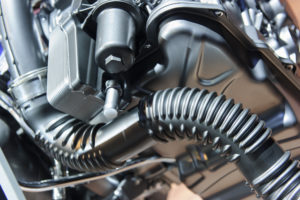Practically from its inception as a manufacturing process in the late 19th century, plastic injection molding has been utilized to produce an ever-widening array of products, in a myriad of industries. For the purposes of this blog post, we’re just going to look at three industries which have benefited greatly from this most malleable of industrial manufacturing processes:
Medical Devices
Ever smaller, ever more sophisticated medical components are the dominant trend in the healthcare space, as less invasive procedures and implants become increasingly prevalent. Over the years, plastic injection molded medical devices have been developed using a set of best practices that help manufacturers and their designers build-in ever-improving precision, strength and durability.
Materials in healthcare equipment and devices, especially implantable ones, remain a vital concern, as base materials, like plastic resins, must be suitable for safe use in the body (biocompatibility), and able to withstand the often challenging conditions found there. The complexities and popularity of multiple-material molding — which may include both plastics and metals — mean that material interactions, safety and efficacy are more critical now more than ever.
Automotive Parts
Lighter, More Prevalent
Car manufacturers have been utilizing plastic molding for years as a way to make their cars lighter, stronger and cheaper. Although the primary goal was increased gas mileage and cheaper production costs, safety was, and is, still key. For example, in an accident, some metal parts are purposefully designed to “give” or crumple. Plastic injection molded car parts must exhibit the same properties.
While the first plastic injection molded car parts tended to be smaller, there has been a move toward larger and larger plastic automotive components, both under the hood and in the passenger compartment. For example, now the majority of interior components — such as the center console, dashboard, door panels, etc. — are plastic. Some manufacturers today are even beginning to explore the possibilities of building large portions of the chassis — or the entire chassis — using plastic molding.
Consumer Electronics
Plastic Injection Molding Innovation
It’s all about size and power when it comes to the most innovative consumer electronic features. From the very beginning, plastics have played a role, not only because of their lighter weight, but also because of their heat-resistant properties, vis-a-vis metal. (Heat resistance is critical in electronic devices, which are jammed with heat-producing computer chips and circuitry.) Whether it’s large-screen TVs or smaller, thinner smartphones, consumer electronics boast ever-increasing features and processing power. Plastic injection molding techniques must meet that challenge, as it’s often the material of choice for the housing and internal structures of these devices.
Bottom line: plastic injection molding will continue to play a vital role in the “Big Three” plastic-consuming industries: medical, automotive and consumer electronics.

